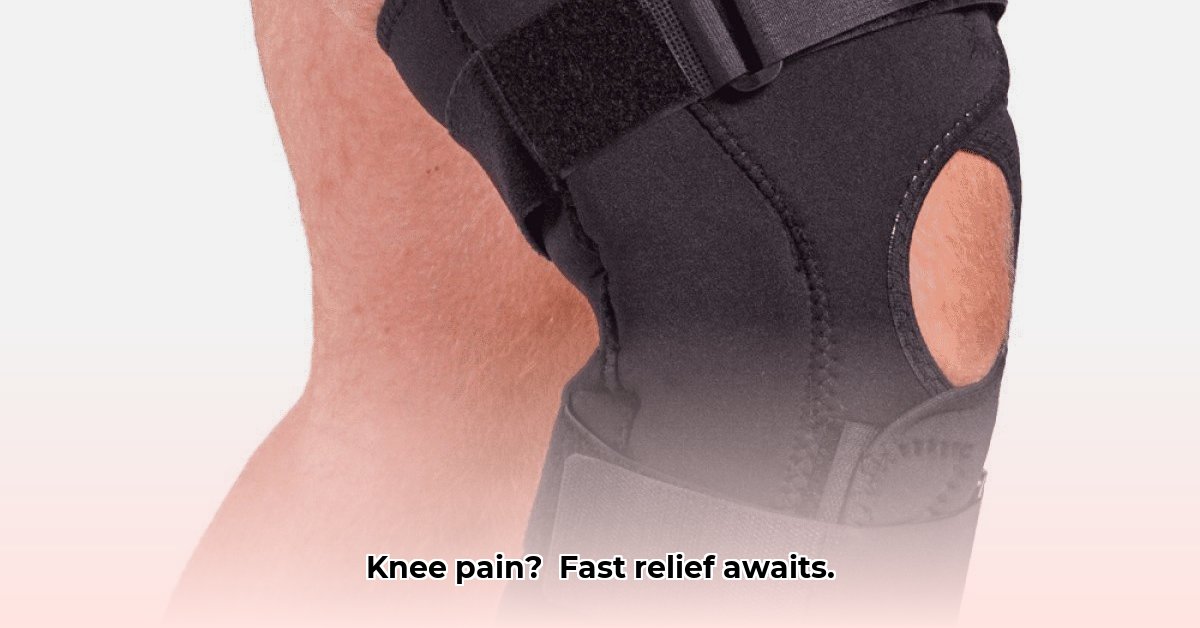
Is kniepyn (knee pain) holding you back, tjommie? Finding the right knee brace can be a game-changer, helping you get back on your feet and enjoying life to the full. But with so many options, choosing the right one can feel overwhelming. This guide will help you navigate the world of knee braces, ensuring you find the perfect fit for your needs and activity level. From understanding different types to selecting the right size and materials, we'll cover everything you need to know.
Different Types of Knee Braces: Finding Your Perfect Match
Knee braces aren't a one-size-fits-all solution. They're like different tools for different jobs, each designed to address specific needs and levels of support.
1. Knee Sleeves: These are like a comfortable hug for your knee, providing gentle compression and warmth. Ideal for mild aches, post-workout recovery, or everyday support. They're comfortable, breathable, and generally affordable. However, they offer limited support for significant injuries.
2. Knee Straps: These provide targeted support, focusing mainly on the kneecap (patella). Helpful for patellar tracking problems or minor sprains. They're easy to apply and don't restrict movement as much as other braces. However, they might not provide enough support for more serious conditions.
3. Hinged Knee Braces: These offer significant support and stability, with hinges that limit excessive movement. Perfect for moderate to severe injuries like ligament tears (e.g., ACL tears) or post-surgery. However, they can be bulky and less comfortable than other options.
4. Knee Wraps: These are versatile and adjustable, offering customizable compression for a range of mild to moderate knee issues. They're adaptable to various activities. However, they may not offer the stability of a hinged brace for severe injuries.
Choosing Your Knee Brace: A Step-by-Step Guide
Picking the right knee brace isn't guesswork; it's about understanding your specific needs and lifestyle.
Step 1: Assess Your Knee Condition: What's causing your knee pain? Is it mild discomfort or a more serious injury? A doctor's assessment is crucial to determine the severity and the level of support needed. A simple sleeve might be enough for mild aches, but a more substantial brace could be necessary after an injury or for conditions like osteoarthritis.
Step 2: Consider Your Activity Level: Are you sedentary, moderately active, or highly active? Your activity level directly affects the type of brace you need. A lightweight sleeve might suffice for someone leading a sedentary lifestyle; however, an active individual needs a more robust brace that can withstand strenuous activities.
Step 3: Get the Right Size: Proper fit is vital. Most braces come with sizing charts, but measure your knee carefully and follow the manufacturer's instructions. A snug, yet comfortable fit is essential for effectiveness. Have you ever tried wearing shoes that are too small? Imagine a brace similarly mismatched.
Step 4: Consider Materials and Features: Look for breathable materials to prevent trapped sweat and skin irritation. Hypoallergenic options cater to sensitive skin. Adjustable straps allow for a personalized fit. Hinges provide added stability which is vital for preventing further injury.
Consumer Experiences and Clinical Evidence: A Balanced Perspective
Online reviews offer valuable insights into real-world experiences. Many users report pain relief and improved mobility. However, individual experiences vary. Clinical studies, while focusing on broader outcomes, support the effectiveness of knee braces in managing certain conditions. Remember, knee braces aren't a magic bullet. They're most effective as part of a comprehensive treatment plan, often including physical therapy and other interventions. Over-reliance on a brace could lead to muscle weakness – not ideal, haai boetie?
Maintaining Your Knee Brace: Simple Tips for Longevity
Proper care will extend the life of your knee brace. Most can be hand-washed with mild soap and air-dried. Avoid harsh chemicals and machine washing. Store it in a cool, dry place, away from direct sunlight.
Knee Brace Types: A Quick Reference Table
| Brace Type | Best For | Pros | Cons |
|---|---|---|---|
| Sleeve | Mild pain, warmth, general support | Comfortable, breathable, affordable | Limited support |
| Strap | Patellar support, minor sprains | Targeted support, easy to apply | May not be sufficient for serious injuries |
| Hinged Brace | Moderate to severe injuries, post-surgery | Excellent support, stability | Can be bulky, less comfortable, more expensive |
| Wrap | Mild to moderate injuries, adjustable support | Versatile, customizable | May not provide as much stability as hinged braces |
The Bottom Line: Partnering with a Healthcare Professional
This guide provides information, not medical advice. Always consult a doctor or physiotherapist for diagnosis and treatment recommendations. They can assess your specific needs and determine the appropriate brace and treatment plan. A knee brace is a helpful tool, but it's not a cure-all. It's part of a broader strategy for managing your knee health effectively.